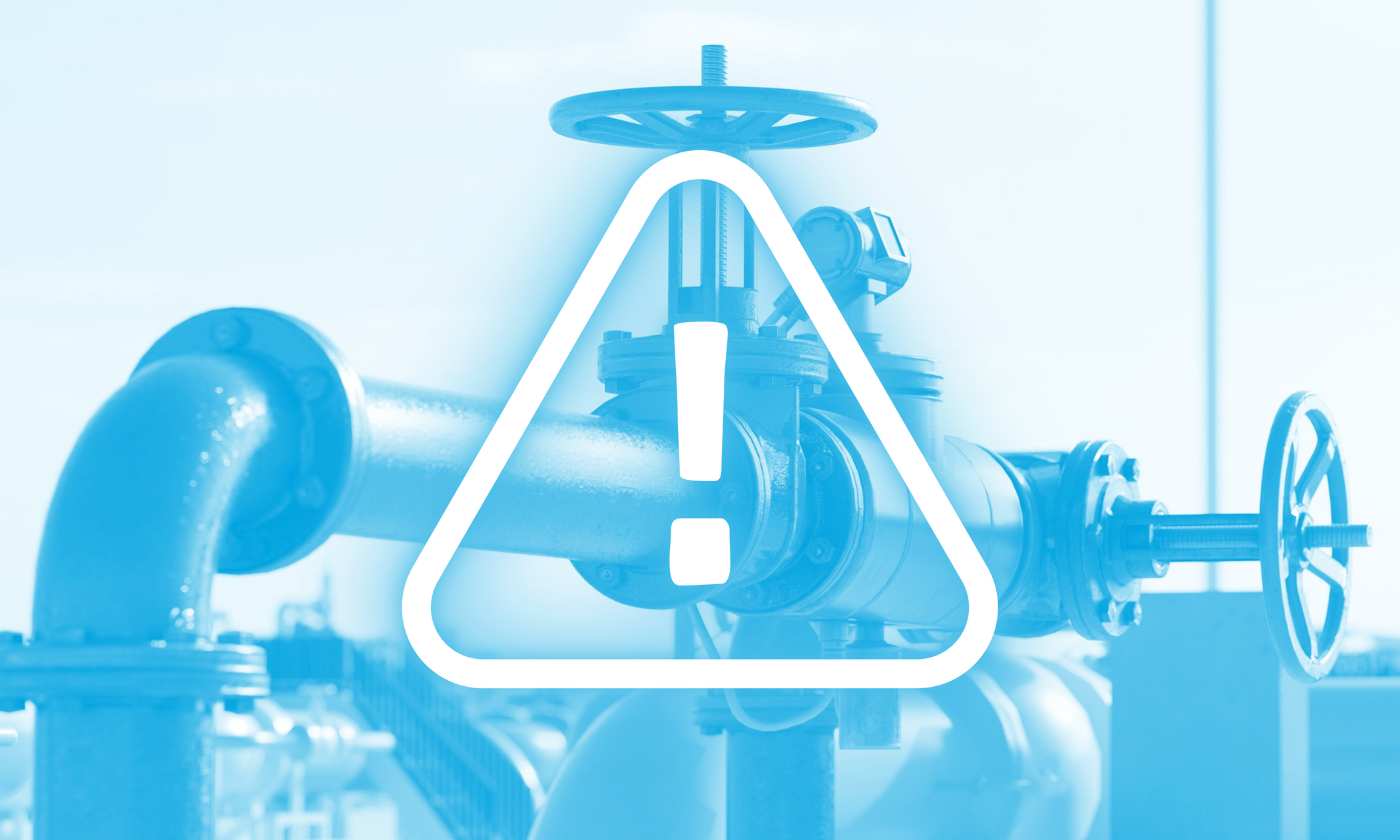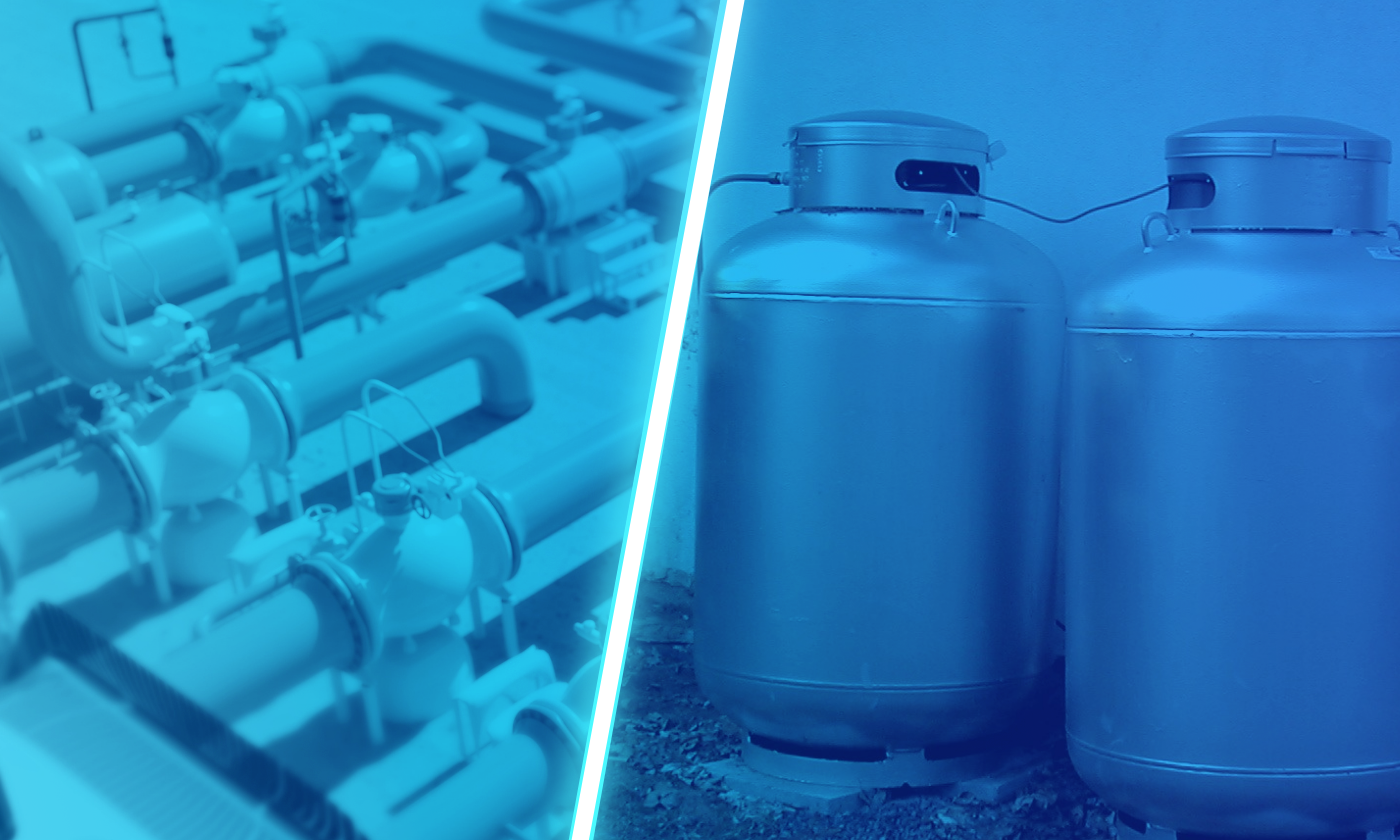アメリカガス協会によると、米国の天然ガス事業者は、天然ガスの配給・輸送システムの安全性向上に毎日9,100万ドル、年間295億ドルを投資している。
しかし、パイプライン、貯蔵タンク、その他の備蓄および輸送用コンポーネントを含むガス供給システムは、摩耗や損傷の影響を受けやすく、腐食や将来の天然ガス漏れにつながります。家庭内または職場のいずれであっても、これらの漏れを迅速に検出して対処することは、事故を防ぎ、環境への影響を最小限に抑え、ガス供給の信頼性を維持するために不可欠です。
老朽化したインフラにおける天然ガス漏れ検出に関連する課題を検討し、これらの課題を効果的に軽減できる革新的なソリューションを詳しく探ってみましょう。
課題を理解する
天然ガスインフラの弱体化には多くの要因が関係しています。効果的な解決策について、より適切で情報に基づいた決定を下すには、まずアメリカのガスシステムのアップグレードを妨げる障害を理解する必要があります。
加齢による劣化
老朽化するインフラにおける主な課題の 1 つは、時間の経過とともに避けられない材料の劣化です。米国の天然ガスパイプラインの多くは数十年前に設置されたもので、現在、想定された耐用年数の終わりに近づいています。ほとんどの材料と同様に、パイプラインやその他のガス輸送資産も老朽化し、故障します。
さらに、適切なメンテナンスと継続的な使用がなければ、このインフラストラクチャは腐食、浸食、材料疲労などのさまざまな要因にさらされます。これらのプロセスにより、インフラストラクチャの寿命が短くなり、天然ガス漏れが発生しやすくなります。
構造健全性データの欠如
多くの場合、老朽化したインフラには、天然ガスの安全性を強化するために不可欠な、包括的な構造健全性データが欠けています。パイプラインと関連コンポーネントの状態に関する正確で最新の情報がなければ、潜在的な弱点や漏れが発生しやすい場所を特定することが困難になります。
言うまでもなく、パイプラインの老朽化や鋳鉄や錬鉄などの特定の材料は、正しい情報がなければ優先順位を付けることができない重大なリスク指標となります。損傷や劣化が長引くと、リソースを効果的に割り当て、頻繁な故障や安全上のリスクを防ぐことがより困難になります。このデータ不足は、天然ガス漏れの効果的な検出と防止の取り組みを著しく妨げます。
誤報率が高い
従来の天然ガス漏れ検知システムは、誤報率が高く、コストがかかり非効率的であることがよくあります。消毒スプレー、エアゾールヘアスプレー、家具用磨き剤などの刺激の強い非食品用化学物質は、誤って天然ガス検知器を作動させ、不必要な不安や混乱を引き起こす可能性があります。
誤報はリソースを浪費するだけでなく、オペレーターの油断を招き、実際の漏れと誤検知を区別することが難しくなります。この課題を解決するには、より正確で信頼性の高い漏れ検出技術の開発が必要です。
大規模ネットワークの監視
ガス供給ネットワークには、広大な地域をカバーする複雑な地下パイプライン迷路が含まれます。このような大規模なネットワークで潜在的な漏れを監視するのは、複雑な作業です。修理とメンテナンスのためのより多くのリソースと、包括的なカバレッジ、信頼性の高い検出、迅速な対応機能を提供する高度なテクノロジーと戦略が必要です。
革新的なソリューション
老朽化したインフラにおけるガス漏れ検出に伴う課題を克服するために、業界ではいくつかの革新的なソリューションが登場しています。これらのソリューションは、革新的なテクノロジーとデータ主導のアプローチを活用して、検出作業の効率と有効性を高めます。
継続的監視システム
継続的な監視システムは、パイプラインの状態と健全性に関するリアルタイム データを提供することで、ガス漏れ検出に革命をもたらしています。これらのシステムは、インフラストラクチャに沿って戦略的に配置されたセンサーを使用して、天然ガス漏れを迅速に特定して対応し、壊滅的な結果のリスクを軽減します。リアルタイムでデータを収集して分析することで、予防的な修復措置が可能になります。
高度なセンサー技術
センサー技術の進歩により、ガス漏れ検知システムの精度と感度が大幅に向上しました。新しいセンサーは、ごくわずかな天然ガス漏れや、圧力、温度、流量のわずかな変化も検知できます。これにより、潜在的な危険を早期に特定し、軽減することができます。さらに、これらのセンサーは正確な位置データを提供するため、効率的な修理やメンテナンスに役立ちます。
データ分析とAI
データ分析と人工知能 (AI) アルゴリズムの統合により、ガス漏れ検出は一変しました。センサーから収集された大量のデータを活用することで、AI 搭載システムはパターン、異常、潜在的な漏れを非常に正確に検出できます。 全米規制公益事業委員会協会によると、AI は修理の特定と優先順位付け、運用コストと保守コストの削減、どのパイプラインが故障しそうかを予測することでインフラストラクチャにおける天然ガス漏れの防止に役立ちます。
これらのインテリジェント システムは、履歴データから学習し、変化する状況に適応し、漏れ検出機能を継続的に改善することができます。
ロボット検査
AI に加えて、老朽化したインフラの検査にはロボット技術が採用されており、手作業による検査よりも安全で効率的な代替手段となっています。これらのロボットは、パイプライン、貯蔵タンク、その他の限られたスペースを移動して、インフラの状態を評価し、潜在的な漏れを特定できます。分析と意思決定に役立つ詳細な視覚データを提供するセンサーと画像装置が装備されています。
予知保全
予測メンテナンス技術は、ガス漏れ検出において注目を集めています。センサー、履歴記録、メンテナンス ログなどのさまざまなソースからのデータを分析することで、予測アルゴリズムは潜在的な障害ポイントを特定し、漏れの可能性を予測できます。このプロアクティブなアプローチにより、オペレーターはメンテナンス アクティビティに優先順位を付け、ダウンタイムを削減し、リソースの割り当てを最適化できます。
早期ガス漏れ検知のメリット
天然ガス漏れの早期発見には、いくつかの利点があります。まず、タイムリーな修理が可能になり、事故のリスクが軽減され、公共の安全への影響が最小限に抑えられます。次に、メタン排出量の削減に役立ち、気候変動の緩和活動に貢献します。最後に、早期発見により、公共事業会社はメンテナンス スケジュールを最適化できるため、コスト削減と運用効率の向上につながります。
天然ガス検知器は早期発見に欠かせないツールです。天然ガスが使用されている場所には必ず検知器を設置し、携帯型検知器を購入してください。
ガス漏れ検知に関する規制と基準
規制機関と業界標準は、天然ガス漏れの効果的な検出と軽減を確実にする上で重要な役割を果たします。これらの規制は、漏れ検出プログラム、検査頻度、および対応時間に関するガイドラインを定義します。これらの標準に準拠することは、ガス供給システムの完全性を維持し、公共の安全を守るために不可欠です。
ガス漏れ検知に関する研修と教育
ガス漏れ検知に携わる人員には、適切なトレーニングと教育が不可欠です。オペレーターと技術者は、天然ガス検知装置の使用、結果の解釈、安全な取り扱い手順に関する包括的なトレーニングを受ける必要があります。継続的な教育と専門能力開発プログラムにより、天然ガスの安全性に関するベストプラクティスに関する広範な知識を得るために、ガス漏れ検知技術の最新の進歩について従業員が最新の情報を入手できるようになります。
結論
老朽化したインフラにおける天然ガス漏れ検出には、安全性と運用効率を確保するための革新的なソリューションを必要とする特有の課題があります。継続的な監視システム、高度なセンサー、データ分析、AI、ロボット検査、予測メンテナンス技術を活用することで、業界はこれらの課題を効果的に克服できます。
家庭や職場でこれらの技術と実践を取り入れることで、ガス漏れの検出と軽減が強化され、ガス供給システムの寿命と信頼性が向上します。業界が進化し続ける中、天然ガス漏れの積極的な検出と予防措置に重点を置くことは、今後何年にもわたって老朽化したインフラの完全性を維持する上で重要な役割を果たすでしょう。
私たちは天然ガスに依存し続けるため、安全を確保し、天然ガス漏れに備える必要があります。ガス漏れ検知と天然ガス安全戦略の詳細については、Denova Detect の天然ガス安全ブログにアクセスし、信頼性の高い電池式天然ガス検知器のセレクションをご覧ください。





コメントを書く
このサイトはhCaptchaによって保護されており、hCaptchaプライバシーポリシーおよび利用規約が適用されます。